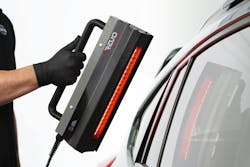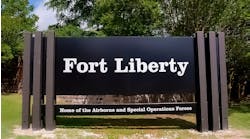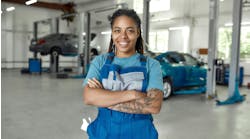In this article, we will explore some ways to apply lean principles to standardize and then to improve business processes. For most of us, the word “change” has a negative connotation. When we change, we move what is known and actions performed out of habit to a changed process which may cause us to struggle with and makes us a bit uncomfortable. And it may or may not lead to improved results.
The founder of Airstream RVs uses the quote to inspire his company’s culture and processes: “Make no changes, only IMPROVEMENTS!” Instead, lean practitioners prefer to seek to “improve” processes. But as lean process engineer Tahici Ohno, the primary developer of the Toyota Production System, once said, “Without a standard, there can be no improvement.”
Therefore, the journey toward improvement requires some key steps (to include defining a current state practice) to enable the lean repairer to base their improvement efforts on. When helping shops improve, we suggest following this lean continuous improvement process:
- Define the area of focus for improvement efforts – what keeps you up at night or what is limiting your ability to make a profit or to deliver the repair in a timely manner?
- To improve a shop process, you first need to define the measurements you seek to improve.
- We need to go into the repair center and discover the current state processes which need to be reviewed and improved. Find out from the staff why they perform the current state process.
- Engage the staff and vendors relative to the process you seek to improve. The shop’s team’s engagement is crucial to buy-in and long-term sustenance of the improvements.
- Once improvements are designed, they need to be tested for effectiveness.
- Once improvements are tested, they can be formalized in written form to educate the affected team members and vendors.
- If they are proven effective, the goal is to sustain the use of these processes consistently. The improvements can be formalized in new-hire training and staff coaching sessions. Long term, those SOPs need to be audited and results reviewed and possibly refined even more.
Most of us have heard this part of the story, but the real gems inside of lean come from tracking errors and then using that data to drive efforts to improve related processes. It is when you see a repairer build a culture of measurement and error tracking that you will find a true lean repairer.
Let’s look into some of the common errors which could be tracked in a collision repair center:
- Tracking why incoming assignments don’t become estimate and later repair orders – CCC reports that this occurs only 77% of the time!
- Tracking why repairers are not using images or visual inspections to pre-order parts to minimize time delays related to parts procurement. Many were taught by previous lean training that preordering was waste, but some short-term waste is acceptable to improve flow and cycle time…
- Tracking why repairers are not pre-scanning and diagnosing damage to further understand the extent of damage. This leads to surprise damage being discovered later in the process
- Tracking the frequency where we are NOT pre-ordering parts and transferring parts from damaged parts to allow technicians to perform 100% disassembly – this allows us to find the hidden damage we often discover later
- Tracking the reasons for writing more than one supplement – just count the number of OEM invoices and you will see this happening on the larger jobs
- Tracking body, frame and mechanical errors – could we use a GFS REVO lamp to fully cure filler to prevent sand scratches from reappearing as coatings cross-link?
- Tracking prep and paint-related errors to minimize repainting or buffing
- Tracking reassembly and final QC errors by not fully reviewing the estimate to ensure all items identified are repaired
- And many more…
A common error is buffing repairs after paint. This should only be necessary with luxury vehicles, where orange peel is not the OEM standard. Therefore, it is valuable to track the frequency of buffing and attempt to get to the root cause of why contaminants get into paint. Often, these things can be tracked back to the following processes:
- Poor painter PPE which is free of dust or other contaminants falling in the paint
- Prepping in the booth and not in the staging area
- Not using an anti-static device after tacking the surface to paint
- Poor booth maintenance
- Leaving the booth doors open without the fan on (positive pressure keeps dust out)
- Not using a dust extraction system for blocking vehicles in prep
- And more…
When repairers truly get focused on preventing buffing, they often go from buffing some or much of the painted surface to only periodically removing minor imperfections. This reduces the cost of the time to remove the imperfections and gives the prep or paint team more time to produce billable paint work!
As second example is relative to the frequency and size of supplements and the reasons these supplements were necessary. To share feedback from these instances where tracking occurred, we often found that not having the main part available to transfer the disassembled part to at disassembly led to technicians not fully disassembling bumpers, doors, and liftgates. They also found that items were missing or found at various times during the repair, such as during installation of parts during body repairs, during paint preparation, and most commonly during reassembly. This cost timely delays waiting for parts added to estimating system, ordered, received, and delivered to the vehicle. As a result, the improvement many repairers focused on centered on getting images prior to physical inspection and a detailed physical inspection of the damage. And that led to the ability to pre-order parts prior to the vehicle's arrival. Then, once the parts have arrived, they can be mirror-matched, painted on both sides, and then moved to the repair-planning stall during disassembly to transfer parts and allow the technicians to catch all the additional parts which might have previously been part of a second, third, or fourth supplement. If a repairer can prevent these errors, the repair cycle time can be dramatically improved, consumer CSI is improved, and insurance scorecard results can be improved.
Once you have solid data on the area where you suspect an opportunity to improve, explain the goal to the team, set the expectation that there will not be negative repercussions for the errors, and then gather the data to have a representative sample to understand the opportunity to improve.
This data on errors and any data gathered and the ideas to prevent gathered from the staff at the moment an error is discovered is like “GOLD” to the repairer, for this gives us a head start in identifying potential improvements. This is the true key to making LEAN work for you!
The next step is to work with your team to review the documented process and decide,
- Do we merely need to review and reinforce / train the current staff on the process currently documented?
- Do the people have the proper incentives to follow the processes as defined?
- Are team members asked for ideas on how the process might be improved to prevent recurrence of errors?
- Are there third parties (fellow 20 group members, paint supplier resources or friends) who have improved the process, which can share their best practices?
Lean repairers need to be able to see the opportunities before them, build the confidence in their staff to confront errors as opportunities and track their frequency, and to continuously look for ways to improve processes as necessary. If they can follow this formula, amazing improvements can follow! In the next article, we will further explore refining quality assurance systems through similar types of measurements.






